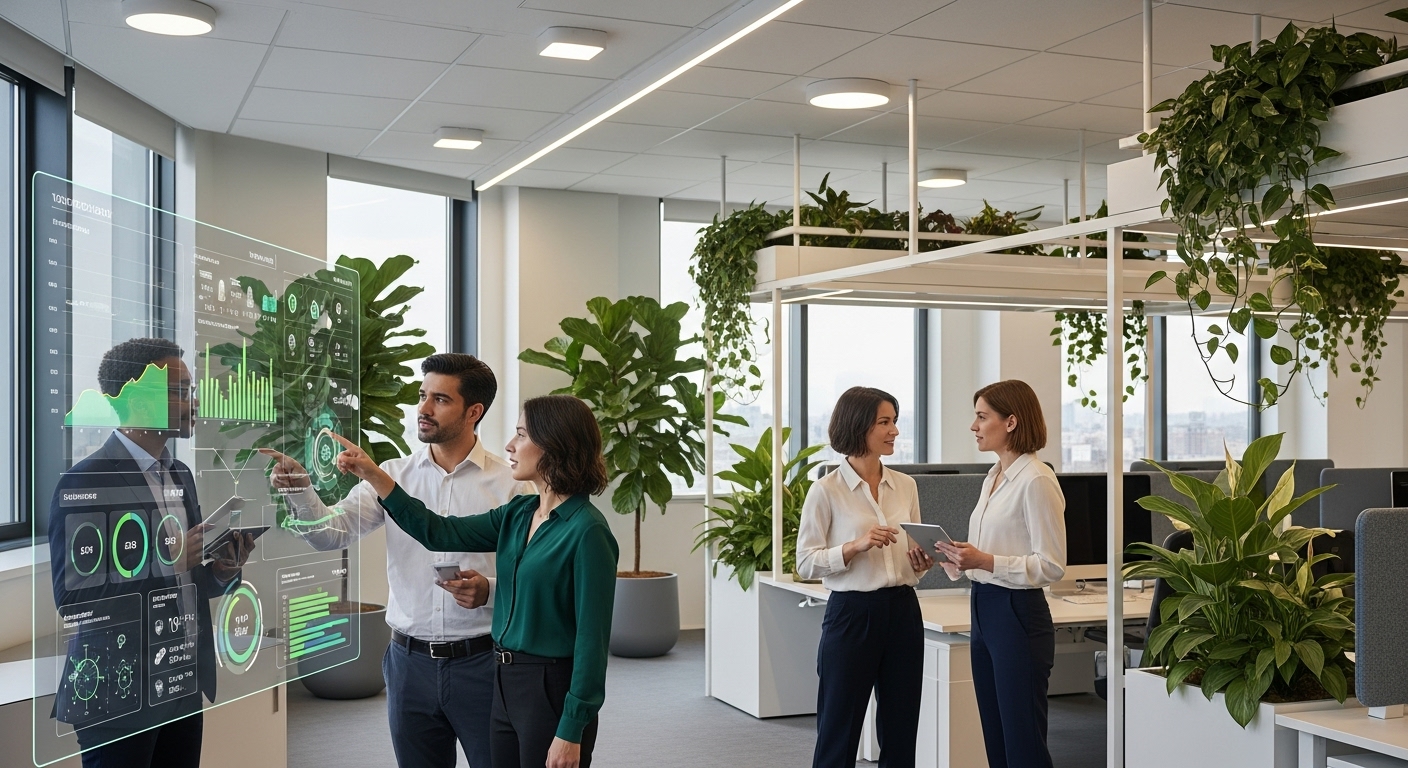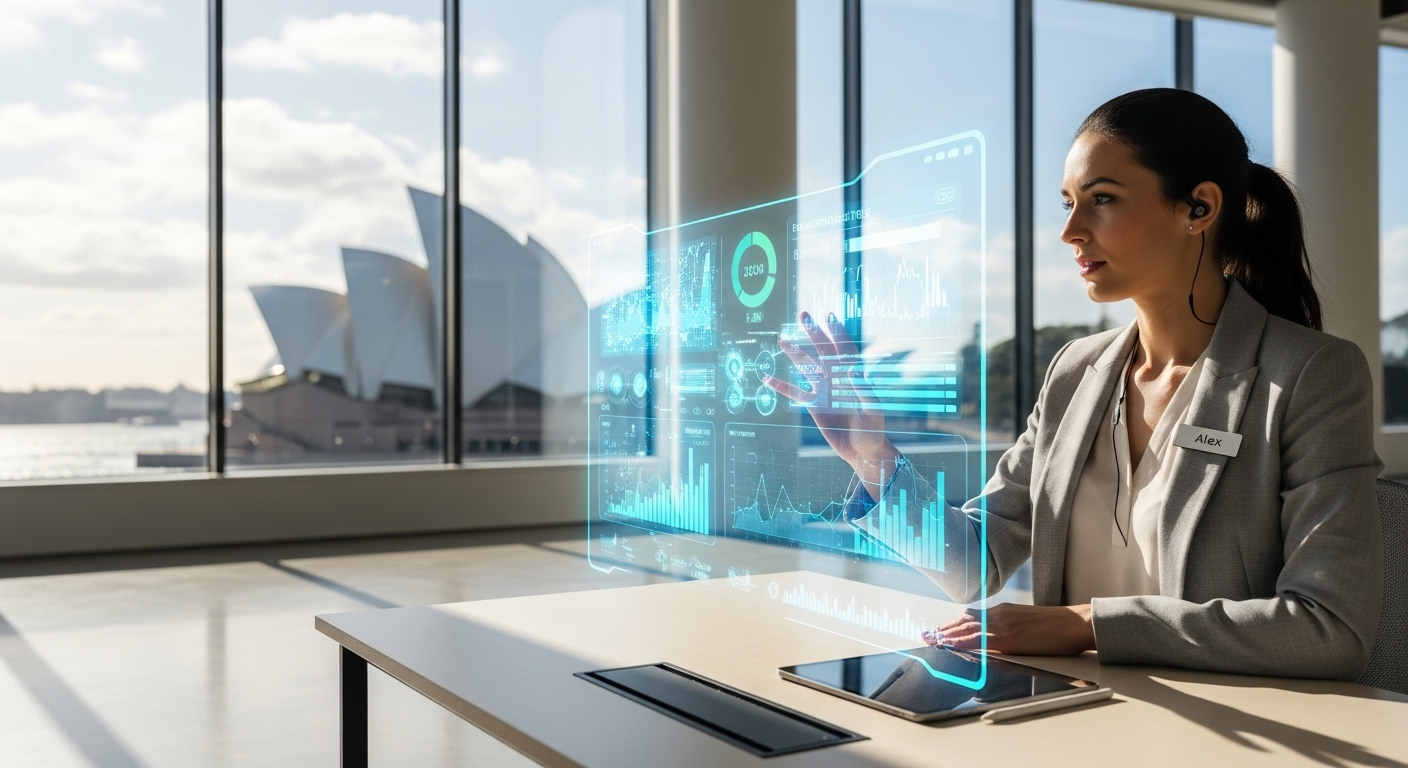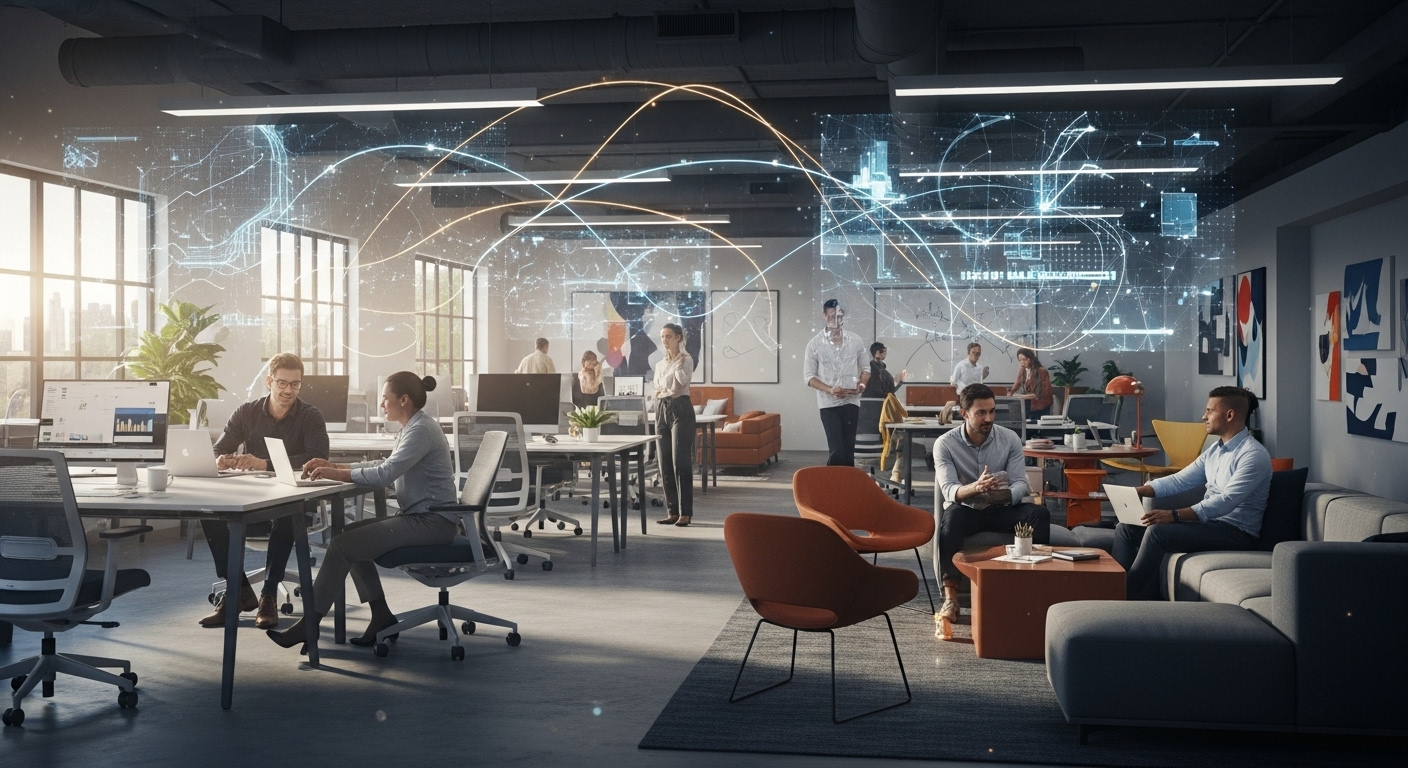The traditional office—a static landscape of assigned desks and fixed infrastructure—is rapidly becoming a relic. In its place, a dynamic, responsive, and intelligent environment is emerging, accelerated by global shifts in how and where we work. Welcome to the era of the smart office, a concept that transcends mere gadgets and Wi-Fi-connected coffee makers. It represents a fully integrated ecosystem where the physical space itself is alive with data, powered by the Internet of Things (IoT) and artificial intelligence (AI). This evolution isn’t just about technological novelty; it’s a strategic response to the demand for more efficient, sustainable, and human-centric workspaces. As businesses navigate the future of work, understanding this intelligent ecosystem is no longer optional—it’s critical for fostering innovation, attracting top talent, and optimizing operations. This article will explore the core technologies behind the smart office, delve into its profound benefits for both the business and its people, navigate the critical challenges of security and privacy, and look ahead to the next frontier of personalized, predictive workplaces.
What is a Smart Office Ecosystem?
A smart office ecosystem is far more than a collection of disparate technologies. It’s a cohesive network where hardware, software, and infrastructure work in unison to create a responsive and adaptive workplace. At its heart, this ecosystem is designed to collect, analyze, and act upon real-time data about the environment and its occupants. Unlike a traditional office, which is largely passive, a smart office actively participates in the daily workflow. Imagine a building that knows how many people are present and in which areas, adjusting lighting and climate control accordingly to save energy. Picture a meeting room that can be booked seamlessly from a mobile app, with the AV equipment automatically powering on just before the meeting starts. This level of integration is the defining characteristic of a smart ecosystem. The primary components include: sensors (for occupancy, air quality, light, and temperature), actuators (smart locks, automated blinds, HVAC controllers), a centralized platform (often an Integrated Workplace Management System or IWMS), and a powerful analytics engine driven by AI. This interconnectedness allows for a holistic view of the workplace, enabling facilities managers to move from reactive problem-solving to proactive optimization, ensuring the physical environment is perfectly aligned with the needs of the organization and its employees at all times.
The Core Technologies: IoT, AI, and Integrated Platforms
The functionality of a smart office ecosystem rests on three technological pillars: the Internet of Things (IoT), Artificial Intelligence (AI), and integrated software platforms. IoT devices are the sensory organs of the office, constantly gathering data from the physical world. This includes everything from infrared occupancy sensors that provide anonymized headcounts for space utilization analysis, to environmental sensors that monitor CO2 levels, humidity, and temperature to ensure a healthy work environment. Smart access badges and door locks create a secure yet frictionless entry experience, while smart lighting adjusts its intensity based on natural daylight to reduce eye strain and energy consumption. However, this vast sea of data is only useful when it can be interpreted and acted upon. This is where Artificial Intelligence comes in. AI algorithms process the raw data from IoT sensors to identify patterns, make predictions, and automate responses. For example, an AI can analyze historical usage data to predict meeting room demand or flag an HVAC unit for preventative maintenance before it fails. The final piece of the puzzle is the integrated platform, such as an IWMS. These systems act as the central nervous system, unifying all the data streams from various IoT devices and AI engines into a single, intuitive dashboard. This provides a command center for facilities managers to monitor operations, manage resources like desks and rooms, and generate detailed reports that inform strategic decisions about real estate portfolios and workplace design.
Boosting Operational Efficiency and Sustainability
One of the most compelling arguments for adopting smart office technology is the significant impact on operational efficiency and corporate sustainability goals. By leveraging real-time data, organizations can make smarter, more cost-effective decisions about their physical assets. For instance, occupancy sensors reveal exactly how and when different zones of an office are used. This data is invaluable for space planning, allowing companies to consolidate underutilized areas, reduce their real estate footprint, and avoid unnecessary leasing costs. In a hybrid work model, this insight enables rightsizing the office to match actual demand. Furthermore, smart technology is a powerful tool for sustainability. Smart HVAC and lighting systems, which account for a substantial portion of a building’s energy use, can be automated to operate only when and where needed. A building management system can analyze weather forecasts, occupancy patterns, and energy pricing to optimize consumption, leading to dramatic cost savings and a reduced carbon footprint. According to industry analysis, smart building technology can reduce energy consumption by up to 30%. Beyond energy, predictive maintenance, powered by AI analyzing sensor data from equipment, minimizes downtime and extends the lifespan of critical assets, preventing costly emergency repairs and disruptions to business operations. This data-driven approach transforms facilities management from a cost center into a strategic driver of efficiency and environmental responsibility.
Enhancing the Employee Experience and Well-being
While operational efficiency is a key driver, the true power of a smart office ecosystem lies in its ability to create a superior employee experience. In the competitive market for talent, a workplace that is comfortable, convenient, and supportive is a major differentiator. Smart technologies directly contribute to this by removing friction from the workday and prioritizing well-being. Consider the simple task of finding a place to work. In a large, hybrid office, an employee can use a mobile app to instantly see available desks, collaboration pods, or quiet rooms, booking a spot with a single tap. This eliminates the frustration and wasted time of wandering the office in search of a workspace. Environmental controls also play a huge role in well-being. Sensors that monitor air quality can automatically increase ventilation when CO2 levels rise, a factor directly linked to cognitive performance and health. Personalized lighting and temperature controls allow the environment to adapt to team or individual preferences, creating a more comfortable setting.
As stated by a report from Deloitte, “Technology can create a more personalized experience for workers by enabling them to customize their physical and virtual workspaces to best suit their needs.”
This focus on creating a responsive, personalized environment demonstrates that the organization values its employees’ comfort and productivity, fostering a positive culture that can boost engagement, satisfaction, and retention.
Navigating the Challenges: Security and Data Privacy
Despite the immense benefits, the path to a smart office is paved with significant challenges, primarily concerning cybersecurity and data privacy. Every connected device, from a smart lightbulb to an occupancy sensor, represents a potential entry point for malicious actors. The proliferation of IoT devices dramatically expands a company’s digital attack surface, creating vulnerabilities that must be rigorously managed. A breach could lead to anything from disruptive tampering with building systems to the theft of sensitive corporate data. Therefore, a robust cybersecurity strategy is non-negotiable. This involves network segmentation to isolate IoT devices, regular security patching, and end-to-end data encryption. Equally important are the ethical considerations surrounding data privacy. Smart offices collect vast amounts of data on employee movement, presence, and behavior. While this data is intended for operational optimization and is often anonymized, its collection raises legitimate privacy concerns. Employees may feel that they are under constant surveillance, which can erode trust and damage morale. To mitigate this, organizations must be transparent about what data is being collected, why it’s being collected, and how it is being used and protected. Establishing clear data governance policies, ensuring compliance with regulations like GDPR and CCPA, and giving employees control over their personal data are critical steps in building a trusted, intelligent ecosystem rather than an intrusive one.
The Next Frontier: Predictive and Personalized Workspaces
The evolution of the smart office is far from over. The next frontier will be defined by a shift from reactive automation to proactive, predictive intelligence. Future smart offices will not just respond to current conditions; they will anticipate the needs of their occupants before they are even consciously aware of them. Imagine an AI-powered workplace assistant that analyzes your calendar and work patterns. It might proactively book a quiet room for you ahead of an important focus session or reserve a collaboration space and invite team members for an impromptu brainstorming session based on project communication analysis. This level of predictive capability will make the workplace feel truly seamless and intuitive. Hyper-personalization is another key trend. Soon, employee profiles could store preferences for lighting levels, temperature, and even desk height. As an employee moves through the building, their environment could automatically adjust to their preferred settings, creating a perfectly tailored experience. Another powerful emerging technology is the ‘digital twin’—a virtual, real-time replica of the physical office. Facilities managers can use this digital twin to simulate changes, test new layouts, and model energy consumption scenarios without any real-world disruption, optimizing the space with unprecedented accuracy. These advancements promise a future where the workplace is not just smart, but truly intelligent—a strategic partner that actively enhances productivity, creativity, and well-being.
In conclusion, the smart office is not a futuristic fantasy but a present-day reality that is fundamentally reshaping our concept of the workplace. By creating an intelligent ecosystem where IoT, AI, and integrated platforms converge, organizations can unlock unprecedented levels of operational efficiency and advance their sustainability missions. More importantly, this technology allows for the creation of a deeply human-centric environment, one that removes daily friction, supports well-being, and empowers employees to do their best work. The journey requires careful navigation of significant security and privacy challenges, demanding a commitment to transparency and robust governance. However, the rewards are immense. As we look toward a future of predictive analytics and hyper-personalized spaces, it’s clear that the companies that will lead the way are those that embrace the power of data-driven technology. Building an intelligent ecosystem is more than a facilities upgrade; it’s a strategic investment in a more productive, sustainable, and engaging future of work.





